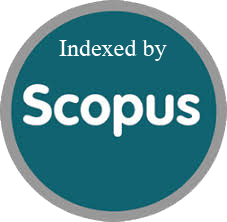Synthesis, Anticancer Activity and in Silico Modelling of Cephalexin Drug
Abstract
cephalexin is an antibiotic that can kill certain types of bacteria that cause infections. We synthesized a novel cefalexin-Schiff base (A and B), namely (Z)-7-(2-((3-bromo-4-hydroxybenzylidene)amino)-3-phenylpropanamido)-3-methyl-8-oxo-5-thia-1-azabicyclo[4.2.0]-oct-2-ene-2-carboxylic acid as derivative A and (Z)-7-(2-((2-methyl-4-methylbenzylidene)amino)-3-phenylpropanamido)-3-methyl-8-oxo-5-thia-1-azabicyclo[4.2.0]oct-2-ene-2-carboxylic acid as derivative B. These derivatives are synthesized from 3-Bromo-4-hydroxybenzaldehyde and 2,4-Dimethylbenzaldehyde that react with cephalexin. Characterization of these derivatives by FTIR and diffusion method is used to determine how these derivatives interact with various bacteria, such as S. aureus and E. coli. The derivative A gives a good result in inhibiting the growth of bacteria. The derivative (A) has been evaluated for breast cancer MCF-7 by MTT assay. The drug's functional groups established two hydrogen bonds with the GLU885 and HIS1026 residues in the receptor's active site.



